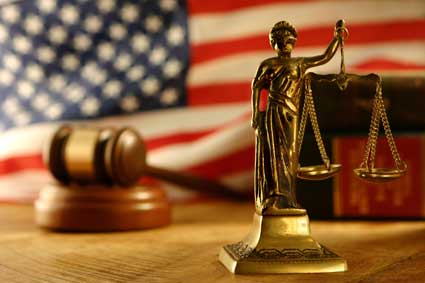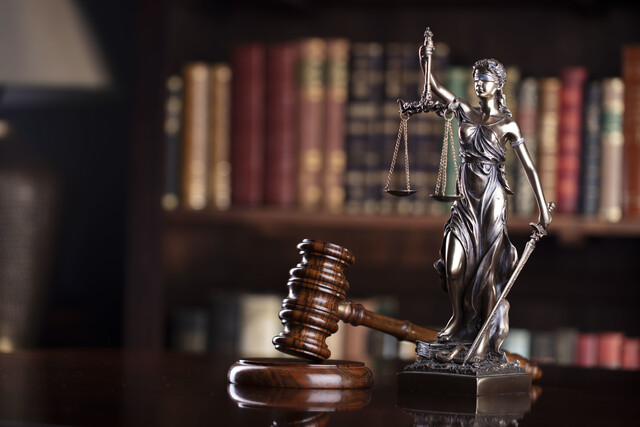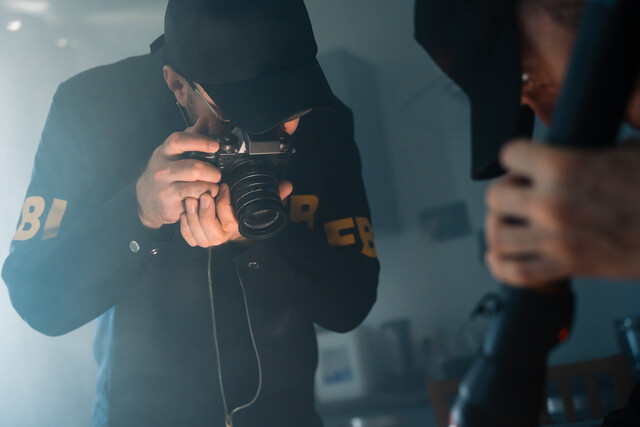Protecting the Evidence
What does unauthorized people mean? It means curious onlookers, family members and members of any law enforcement body such as supervisory or city government personnel. In many towns and cities, county district attorneys as well as prosecuting lawyers are often called to the scene of a crime as a matter of courtesy or city government policy. However, it is extremely important to limit access to a crime scene, and that goes for everyone who is not absolutely essential to the task of examining or gathering evidence.
This is not an easy task. High ranking police officers, sheriff's department personnel and other local government officials seem to take it as their right to visit and enter crime scenes. Such activities should not be condoned, nor supported by local law enforcement departments, though that's easier said than done. A crime scene investigator must be aware of the protocol and policies of any law enforcement department they work with in order to avoid difficulties that can arise from such a situation.
A criminal case can be made, or lost, at the crime scene. It is the place where the greatest margin of error lies, and the one place where improper procedure or breaking protocol in the collection and retrieval of evidence faces the greatest scrutiny, not only immediately following the procedure, but perhaps, months or even years later when the case goes to trial.
Protect the scene as quickly and as effectively as possible.
The primary consideration at this point of any investigation is to isolate and preserve the body of the victim and the surrounding area. For more complex situations where large areas need to be contained, the officer must use discretion and secure the most vital area of the crime scene until help arrives. In order to accomplish this, an officer or crime scene investigator should naturally begin at the immediate vicinity or location of a victim or body and move outward from there.
-
A vehicle believed to have been used in the crime
-
A point of forced entry
-
A possible escape route
-
A suspect -- for example, clothes, hands, shoes, etc.
-
Any weapons or other physical evidence
-
The location where an assault took place (if known)
-
The location from where a body was moved (if known)
-
A suspect's residence
Since every situation will be different, law enforcement personnel and crime scene investigators constantly face obstacles and challenges as they attempt to protect and preserve a crime scene. Sometimes, weather and the elements will be against you, as will crowds, emergency situations such as fires, explosions and natural disasters, as well as the process involved in subduing and taking a suspect into custody.
-
Without meaning to, family members often contaminate crime scenes by attempting to move or cover the victim from prying eyes, or cleaning scattered or broken furniture.
Generally, there are five factors that contribute to crime scene contamination:
- Relatives or friends of the victim - Though they mean well, friends and relatives often attempt to clean up a crime scene in order to spare the victim or surviving family members embarrassment, especially in cases of suspected suicide. In addition, since family members are always the first to be suspected of any crime, they may also attempt to hide, destroy or otherwise alter evidence at the scene.
- Onlookers -- Curiosity is a natural human emotion and the interest and curiosity involving a crime scene seems to generate crowds of onlookers in an alarmingly short period of time. In some cases, such onlookers will pick something up without thinking or realizing that it might be an important clue. Often, thieves will take wallets, weapons or other personal items from the victim or the surroundings. In addition, onlookers can leave a multitude of evidence on their own, including fingerprints, footprints, bits of clothing and even bodily fluids that may ultimately contaminate important pieces of evidence.
- Weather -- No one can control Mother Nature, and if the crime scene is located outdoors, weather can cause a number of problems in the processing of any crime scene. While a crime scene investigator can't control wind or rain or sun, being prepared for anything will help to protect the integrity of the scene, whether from rain and snow or the blazing heat of summer.
Suspects -- People suspected of committing the crime may attempt to destroy or remove incriminating evidence from a crime scene. It is important to keep a suspect away from the primary crime scene to avoid contamination.
Unnecessary Law Enforcement personnel -- Remember that no matter how highly ranked a superior or commanding officer, if he or she has no value to add to the discovery, collection or retrieval of evidence from the crime scene, they do not belong there.
After examining the crime scene, a crime scene investigator needs to determine point of entry and egress, in the case of a crime that occurred indoors, or a suspect's approach to and exit from an exterior location. Placement of physical evidence needs to be marked, with the use of evidence cones or tags and photographed in place before they are moved.
Recovery of evidence along a route to or from a victim should be noted, photographed and collected prior to closer examination of the vicinity immediately surrounding the victim whenever possible.
The initial crime scene investigator or supervisor should be the first to mark a "safe route" toward a victim to avoid contaminating any scene, and any personnel entering or leaving the crime scene needs to follow that route to avoid leaving footprints, fingerprints in areas of the crime scene that still need to be processed.
Implementing crime scene control procedures is a basic requirement and necessity when approaching any crime scene and incorporates a common sense approach.
-
Determine and assess the general crime scene
-
Take preliminary photographs to "freeze" the scene upon arrival
-
Establish crime scene perimeters
-
Protect the scene with law enforcement personnel through physical presence and barriers
-
Protect the crime scene from weather if necessary
-
Determine any additional crime scenes
-
Establish a "Safe Route" for entry and exit to a crime scene
Follow established procedure and protocol to protect the scene and safeguard the integrity of any existing evidence.
Conclusion
It is imperative that the crime scene remains intact. During the initial assessment of any crime scene, a crime scene investigator should adequately evaluate consistencies and inconsistencies that may be important to the continuation of the investigation. In addition, any additional crimes scenes need to be considered, especially in the cases where a victim has obviously been "dumped". Following that, evidence must be photographed and collected using strict and approved methods of retrieval and collection in order to preserve integrity and to limit and avoid contamination. As such, the chain of custody of evidence must be strictly enforced throughout the evidence collection phase.
-
























